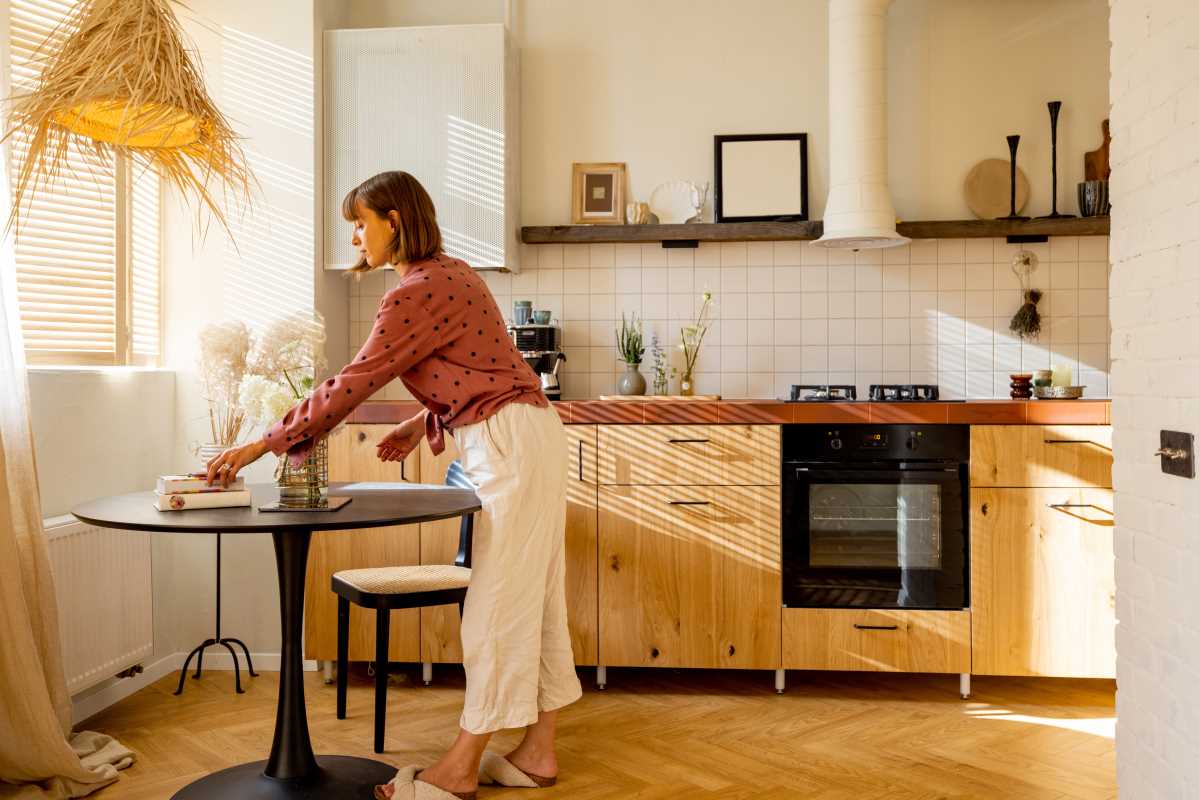Adding eco-friendly accents to your home can be both affordable and rewarding. You can update your living space, make choices that help the environment, and keep your spending in check at the same time. This guide shares simple ways to plan your decorating project, discover budget-friendly sustainable pieces, and create inviting looks that reflect both care and creativity. With a few thoughtful changes, you can bring new life to your surroundings while making a positive impact. Discover how easy and enjoyable it is to decorate with style and sustainability in mind.
Set Your Eco-Friendly Budget
Before you start browsing for recycled rugs or bamboo shelves, set a clear budget. Determine how much you can spend on each room or project. Write down a maximum limit and a comfortable “stretch” limit in case you spot a deal you can’t pass up. With that guardrail in place, you’ll shop with confidence and avoid impulse splurges.
Divide your overall budget into categories like textiles, furniture, and accessories. That way, you’ll know exactly where to allocate extra savings if you find a high-quality secondhand piece or a sale on natural-fiber cushions. Keep track on a simple spreadsheet or notepad to stay organized and mindful of costs.
Where to Find Affordable Sustainable Materials
Looking in the right places can cut costs and improve eco-friendly sourcing. Start with local spots and expand online when needed. Here are a few go-to options:
- Community markets or swap meets: Unexpected treasures appear when people trade rather than toss.
- Online resale platforms: Apps focused on secondhand often have dedicated sections for home goods.
- Bulk fabric outlets: Clearance ends of natural yarns and cloth rolls let you grab enough material for curtains or cushions at rock-bottom prices.
- DIY supply shops: They sometimes offer discounted scrap wood or leftover paint from bigger jobs.
Searching at multiple venues helps you compare quality and price. If you find vintage glass vases at a garage sale and simple ceramic planters on an auction site, you can mix both without breaking your budget.
Budget-Friendly DIY Decor Ideas
You don’t need fancy tools to craft eye-catching pieces. A bit of creativity goes a long way. Follow these steps to transform ordinary items into statement decor:
- Take an old frame and swap the glass for pressed botanical leaves. Seal them with clear adhesive to create a nature-inspired piece.
- Upcycle glass jars into painted candle holders by applying chalk paint and adding a strip of lace or twine.
- Turn leftover fabric scraps into a patchwork pillow cover. Stitch scraps together, back with an existing pillow insert, and finish with visible hand-stitching for a homemade vibe.
- Build a floating shelf from reclaimed wood. Sand it lightly, seal with natural oil, and mount with repurposed metal brackets.
These tricks cost next to nothing, and you’ll feel proud showing off your handiwork. Kids or roommates can join in, too, making it a fun group project.
Thrift and Upcycle: Smart Shopping Tips
Thrift stores, clearance racks, and flea markets serve as treasure troves when you know what to look for. Focus on items made of solid wood, metal, or natural fibers. Check stitching on textiles, stability of legs on chairs, and screws on metal pieces. A little cleaning or a fresh coat of eco-friendly paint can revive a dated find.
Keep a running list of specific items you need—tables, throw pillows, rugs—so you don’t end up with random knickknacks that clash. When you see an affordable piece, imagine it in your space: could that side table hold plants? Would that basket make a great magazine holder?
You can learn simple reupholstery skills from quick video tutorials, which opens the door to thrifted chairs and sofas at small cost.
Compare Prices and Read Labels
Spending a few extra minutes scanning labels and shopping around pays off. Organic cotton, bamboo, cork, jute, hemp—each material has its own price point and durability. If you find two similar baskets, check for recycled-content tags, fair-trade certifications, and origin country notes. Choosing a slightly more expensive but longer-lasting piece often reduces replacement costs.
Online reviews and rating sites help you identify sellers with reliable descriptions. Nothing beats a clear picture of a real product in someone’s living room. When in doubt, message the seller to ask about materials, wear and tear, or care instructions. That transparency prevents returns and hidden fees.
Styling on a Budget
You don’t need every accessory in a trending color to recreate a stylish look. Instead, pick two or three complementary hues and incorporate them into pillows, small rugs, and wall art. Earthy terracotta, muted sage, or pale sand shades match well with reclaimed wood and woven textures.
Group items by theme—say, coastal or bohemian—and mix thrifted and handmade pieces to create a cohesive display. Use green plants as an affordable, living decor element that purifies air and adds a splash of color. Terracotta pots or repurposed tins turn simple stems into focal points.
Layer lighting: a mix of solar-powered string lights, thrifted table lamps, and candle clusters gives warmth without high energy bills. The goal is to balance function and style while stretching each dollar.
Shopping smart and getting creative proves that you don’t need a big budget to craft a beautiful, eco-friendly home. Start small, keep track of your expenses, and enjoy every piece you find or make yourself. Savor the process and celebrate every win—your wallet and the planet will thank you.
Start by setting your budget and looking for sustainable options. Take action and put these tips into practice—you can do it!







